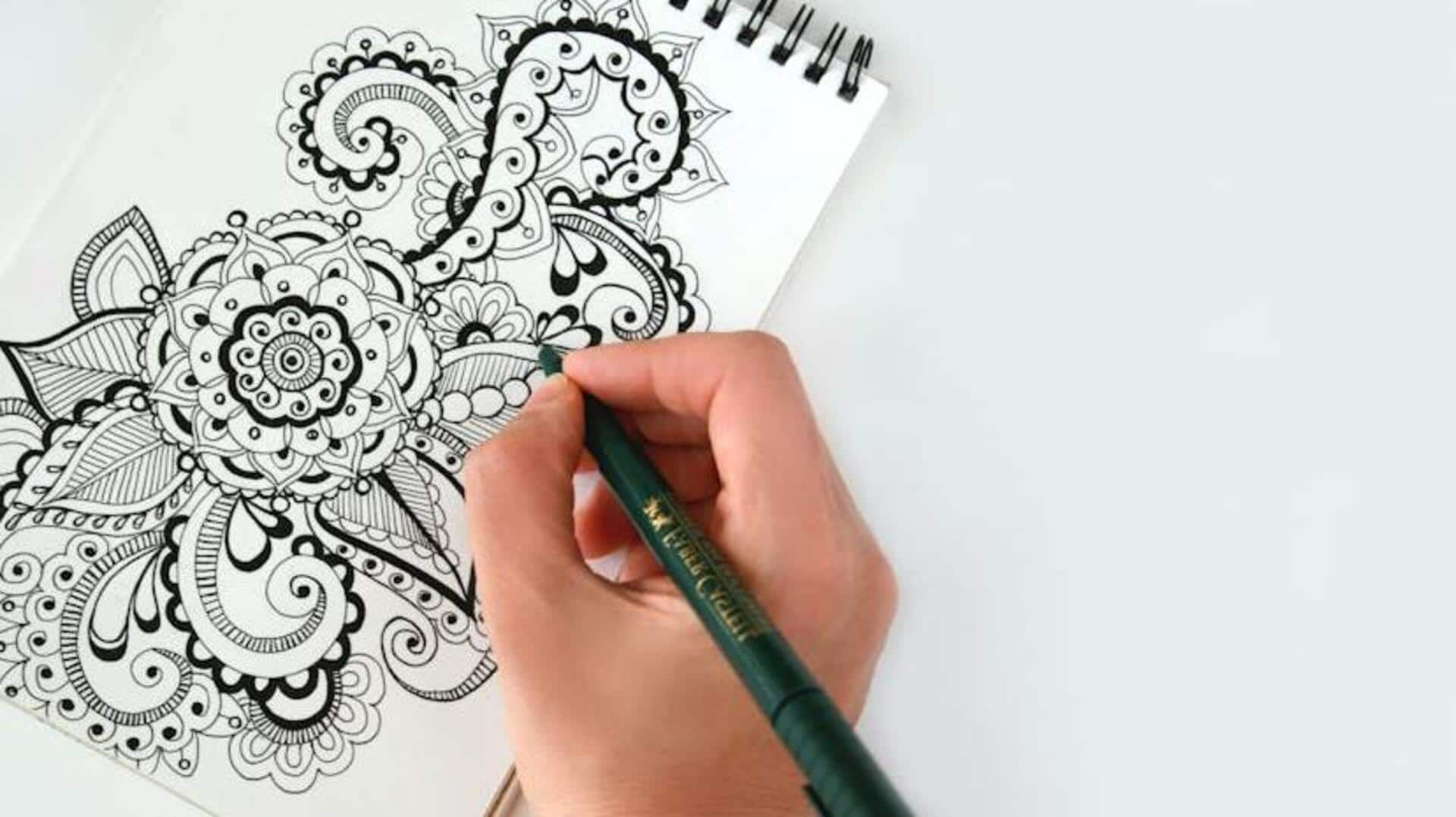
Doodle your way to calm: The benefits of art therapy
What's the story
If you're looking for a simple yet effective way to nurture yourself, you can try art therapy doodling. Essentially, it's all about making spontaneous drawings that can go a long way in reducing stress and enhancing creativity. Plus, the best part is that you don't need any artistic skills for the same. Here's a look at how doodling can help you.
Tools selection
Choosing the right tools
Selecting the right tools for doodling is essential for a satisfying experience. Basic supplies like paper and pens are good enough to start off with. But experimenting with colored pencils or markers can bring a lot of variety to your creations. The key is to choose the materials you feel comfortable using, as that will encourage you to practice and explore regularly.
Time management
Setting aside time for doodling
Allocating specific time slots for doodling can go a long way in amplifying its therapeutic benefits. Just setting aside 10 minutes a day can work wonders on your mental health. Practicing this consistently helps you develop a habit, allowing you to indulge in art therapy doodling on a regular basis. This way, you can have a calm, pressure-free way to unwind, creating a consistent space for relaxation and creativity.
Pattern exploration
Exploring different patterns and styles
Experimenting with different patterns and styles is what makes doodling interesting and engaging. From simple geometric shapes to complex abstract designs, you can explore an infinite number of possibilities. Not only does trying out different styles refine your creative skills, but it also helps you find your own personal styles that resonate the most with your emotions. Making each doodle truly your own!
Reflection process
Reflecting on your doodles
Taking time to reflect on your completed doodles provides insight into your emotional state and thought processes. By observing recurring themes or patterns, you may discover underlying feelings or concerns that need attention. This reflection process is an integral part of art therapy, as it fosters self-awareness and personal growth through creative expression.